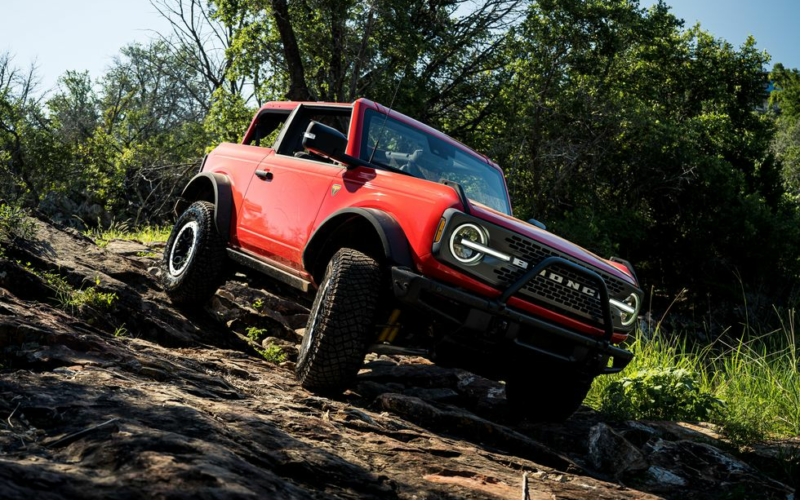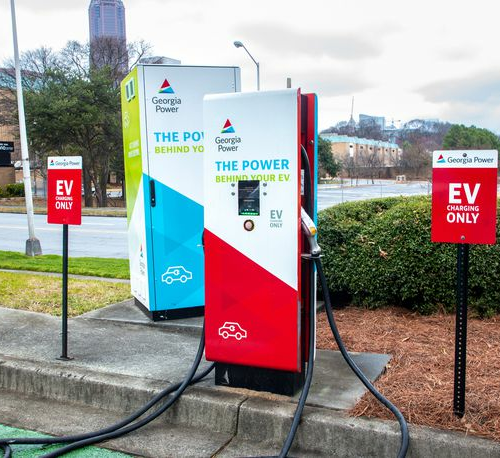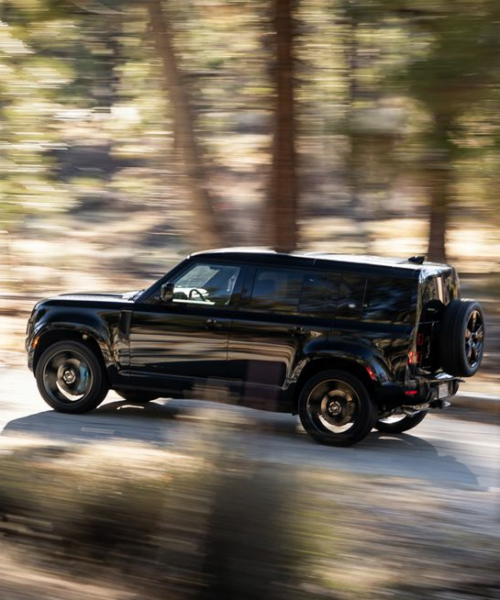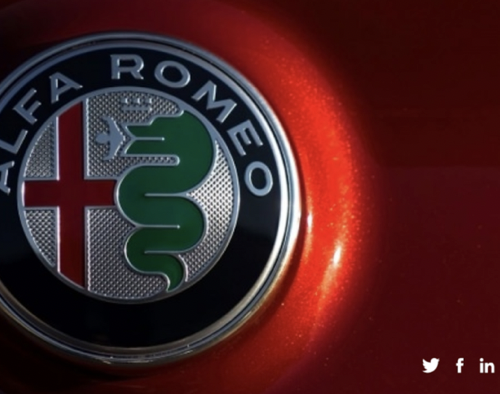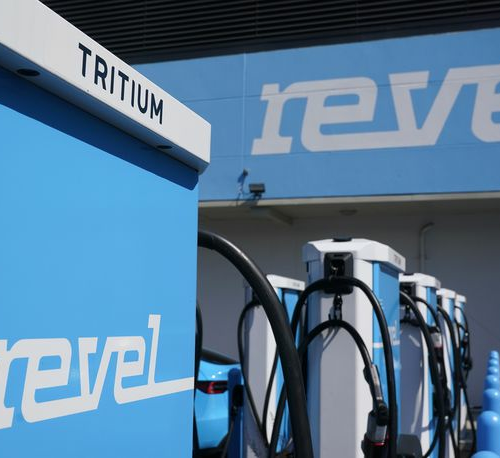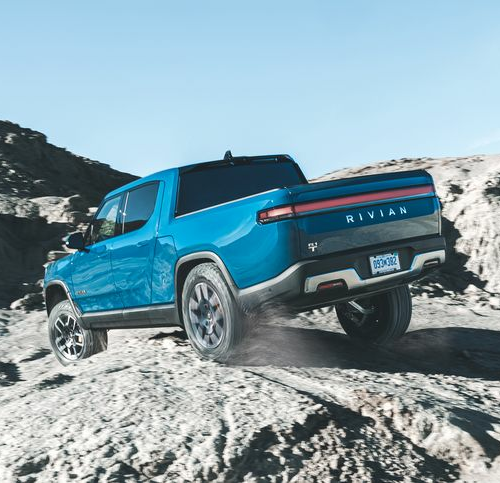BY DAVE VANDERWERP | CarAndDriver.Com
Troy Warren for CNT
We knew Ford’s new Bronco would be seriously great off-road, but where it really one-ups the Jeep Wrangler is in refinement.
Faced with the choice of which of the many trim levels to pilot on the paved-road portion of our much-anticipated first drive in the new Ford Bronco, we went straight for one with the knobby, 35-inch mud-terrain tires that come as part of the optional Sasquatch package. While that might seem counterintuitive, we had full faith that the Bronco would be plenty capable off-road. What we really wanted to know is just how compromised it is on the road, so we figured we might as well start with the variant that makes the most sacrifices for street use.
If you’ve somehow missed the news or aren’t among the nearly 200,000 in line to take delivery, the Bronco is back after a quarter century in two-door and, for the first time, four-door variants. Two-door models come only with a hard top, while four-doors also have a soft-top option. Either way, the top, as well as the doors, fender flares, and even the fenders are easily removable. Propulsion is provided by familiar Fordpowertrains: a 300-hp turbocharged 2.3-liter four-cylinder or a 330-hp twin-turbo 2.7-liter V-6. Both are paired with a 10-speed automatic transmission, but only the four can be had with a new seven-speed Getrag manual. There are six trim levels that span base prices of $29,995 to $62,605, plus five outdoorsy trim names (Big Bend, Black Diamond, Outer Banks, Badlands, and Wildtrak) and a loaded First Edition model. Feature content and off-road capability generally increase as you climb the range, but it’s great that even the base version can be had with the hardcore Sasquatch package ($2495 and $4995, depending on trim), which adds locking front and rear differentials, a shorter final-drive ratio, and the big 35-inch rubber.

Starting at about 30 mph, those 17-inch LT315/70 Goodyear Territory MT tires—at Ford’s insistence, Goodyear scrubbed the Wrangler part of this tire’s name from the sidewall—start singing. Between 65 and 70 mph, wind noise overpowers tire roar. Even with the optional layer of extra sound-deadening material on the two-door Wildtrak model’s hard top, we wouldn’t wager that the Bronco is any quieter at speed than its obvious competitor, the Jeep Wrangler, until we get a chance to measure it on our regular test surface.
However, the Bronco’s steering precision is miles ahead of the Wrangler’s—thanks largely to its more sophisticated independent front suspension and rack-and-pinion steering—even on squirmy off-road-oriented tires. And we say this after having done one of the most inappropriate things one could do with a Bronco outfitted with all of its off-road kit: We threw it down a twisty road at max-attack speed. We’re certain we were carrying velocities that would have put a Wrangler in a ditch, and surprisingly, the laughter that ensued wasn’t at the absurdly low limits and compromised handling. It was because the Bronco is actually enjoyable to hustle on the road. We were chuckling with the Bronco, not at it.

Before we get carried away, remember, we’re talking relative refinement here. Big stabs at the brakes bring dramatic dive from the Sasquatch’s softer Bilstein dampers. Body roll when cornering didn’t feel excessive, although the setup is still plenty soft. The Bronco’s telltale body-on-frame structural dithers come through the steering wheel, but they’re quite muted. This first application of Ford’s next-generation mid-size-truck platform makes for remarkable refinement, despite the Bronco’s off-road bent.
Roll into the throttle from rest and, by the top of first gear, the V-6 is taxing the tires sufficiently to instigate traction control, which then steps in even more in the wake of the 1-2 upshift. The power is there—V-6 variants should sprint to 60 mph in the mid- to high five-second range—but we were disappointed there isn’t more audible fury. Something more extreme than its muted roar and strong airflow backing track seems appropriate for a vehicle whose logo is a powerful horse at full flail. The Wrangler’s naturally aspirated V-6 has better vocals. Conversely, there’s a crispness with which the manual’s shifter moves into each gate, the clutch-pedal effort is well tuned, and the turbo-four responds enthusiastically to throttle blips during heel-toe downshifts. Although the four-pot emits a less-than-invigorating thrum and is easier to catch off boost, particularly with the manual, it only gives up 30 horses to the V-6.

Many have taken to calling this Bronco the Big Bronco to distinguish it from the smaller Bronco Sport that launched last year. And Big Bronco is an apt descriptor compared with the Wrangler. From the driver’s seat, this Ford’s more than two inches of extra width are immediately obvious when looking out over its broad hood. That additional width also means a welcome gain in space for the knees and elbows of front-seat occupants. There’s almost never a universal consensus on styling, but the Bronco seems to be about as close as they come to a ubiquitous hit. There’s obvious homage to the original Bronco of the mid-1960s, yet the new truck doesn’t come off at all retro. We do think that the visual wallop of the two-door is somewhat dulled by the four-door’s additional 15.7 inches of wheelbase and overall length. And this rig just doesn’t look right unless it’s wearing one of the more aggressive tire packages.
Importantly, however, a need for rear-seat space doesn’t mean heading straight for the four-door. That model’s stretch in wheelbase and length goes almost entirely to additional cargo space—the four-door has more than 50 percent more—while its rear legroom increases by a scant 0.6 inch. Even this six-foot-five evaluator found sufficient space in the back of the two-door, and both Bronco variants have similar rear-seat space as a four-door Wrangler Unlimited. Other than the ease of accessing those seats, the biggest difference between the two Broncos is that the two-door’s aft quarters are narrower and you sit further inboard, which also means there’s no center seating position.

Although there are some nice touches inside the cabin, such as the splash of contrasting color on the vent-control tabs and on the grab handles at either end of the dash, the interior is plain in places, with vast expanses of black plastic on the doors. This is more of a nit on upper trims, yet this is always a struggle for vehicles that can be optioned to double their entry price, whether it’s from $30,000 to $60,000 or from $100,000 to $200,000. Either way, a number of interior niceties on the prototype Bronco we rode in last summer have disappeared in the production model. Ford’s steering-wheel leather isn’t as nice as Jeep’s, and although our seat time was limited, we think we prefer the base cloth seats to the leather thrones, as a hard spot in the upper back area was off-putting. Call us old-fashioned, but we’d also prefer a mechanical tachometer to the Bronco’s cartoonish digital display.
Ford has gone to great lengths to make the Bronco approachable off-road, both in the vehicle itself and with the four off-road playgrounds—called Bronco Off-Roadeo—that it’s constructing, which buyers get to attend for free. We put the Bronco’s capabilities to work at the one outside Austin, Texas, plowing through bumper-deep water, scaling mud-slicked rock faces, and making some awful scraping noises while the underbody skidplates did their thing. We think this is going to be a big hit with owners.

The Bronco’s drive-mode dial adjusts its four-wheel-drive system, the front and rear electronically locking differentials, and the front anti-roll-bar disconnect, plus throttle response and steering effort. Just choose the surface you’re on and go. There’s a feature called Trail Turn Assist that grabs the inside rear brake to allow the Bronco to pivot around the dragging tire, reducing the diameter of its turning circle by as much as 40 percent. Broncos with the V-6 also get Trail One-Pedal Drive, which increasingly applies the brakes as you back out of the throttle to simplify navigating spots that might otherwise require two-pedal driving. There’s also Trail Control, which is a low-speed cruise control that will maintain the set speed in 0.5-mph increments in 4 Low, be it up or down obstacles.
The available protective covers for the removable top panels and doors are labeled in a way that even a first-timer will find them easy to work with. Each one has a little graphic depicting which piece it holds and where to store it in the cargo area, plus a QR-code link to an instructional video. There’s also a spot molded into the bottom of the doors that’s at the optimum lifting point. The inexperienced won’t even appreciate how convenient and time saving it is to have the Bronco’s door checks integrated into its hinges, which means that even when a door is unbolted it won’t accidentally blow open and crash into the bodywork. (You’ll see telltale dimples on many a Wrangler door where this has happened.) The windows are frameless, which shrinks the size of the doors and allows all four to be stowed onboard in the cargo area when removed. However, everything’s a compromise, and the long side glass, especially on the two-door, struggled to drop down quickly enough to avoid snagging on the weatherstripping when we tugged at the door handle. Also, at speed, we could hear wind noise at the top of those seals.

If a new Bronco is in your future, leave some room in your budget for fuel. This is the rare vehicle that, in many trims, gets no better fuel economy on the highway than in the city, at least according to the EPA. Broncos wearing the 35s are labeled at 18 mpg city and highway with the four-cylinder and 17 mpg with the V-6. The most efficient Bronco achieves 20 mpg city and 22 highway. Although the Wrangler puts up better numbers, part of its advantage is that the aggressively tired variants, such as the Rubicon, don’t get separate ratings.
While the wait to slip behind the wheel of the new Bronco has been long and sometimes excruciating, it seems to have been worth it based on our initial exposure. Behind the rugged and tough trim names and its legitimate off-road chops, Ford’s reimagined Bronco is an approachable and refined softy—particularly on the road, where all but the most committed trail hands will be driving them most of the time.
Specifications
2021 Ford Bronco
Vehicle Type: front-engine, rear/4- or rear/all-wheel-drive, 4 or 5-passenger, 2- or 4-door wagon
PRICE
Base: 2 Door/4 Door: $29,995/$34,695; Big Bend, $34,880/$37,375; Black Diamond, $37,545/$40,040; Outer Banks, $40,450/$42,945; Badlands, $43,590/$46,085; Wildtrak, $48,475/$50,970; First Edition, $58,410/$62,605
ENGINES
turbocharged and intercooled DOHC 16-valve 2.3-liter inline-4, 300 hp, 325 lb-ft; twin-turbocharged and intercooled DOHC 24-valve 2.7-liter V-6, 330 hp, 415 lb-ft
Transmissions: 7-speed manual, 10-speed automatic
DIMENSIONS
Wheelbase: 100.4–116.1 in
Length: 173.7–190.5 in
Width: 75.9–79.3 in
Height: 71.9–75.3 in
Passenger Volume: 99–108 ft3
Cargo Volume: 22–38 ft3
Curb Weight (C/D est): 4350–5250 lb
PERFORMANCE (C/D EST)
60 mph: 5.7–6.5 sec
1/4-Mile: 14.2–15.0 sec
Top Speed: 112 mph
EPA FUEL ECONOMY
Combined/City/Highway: 17–21/16–20/17–22 mpg
In Other NEWS


























